Early Medieval: Architecture
The majority of Anglo-Saxon buildings were constructed mainly using wood, so few are left standing. But the timber-building tradition left its mark on later stone-built churches.
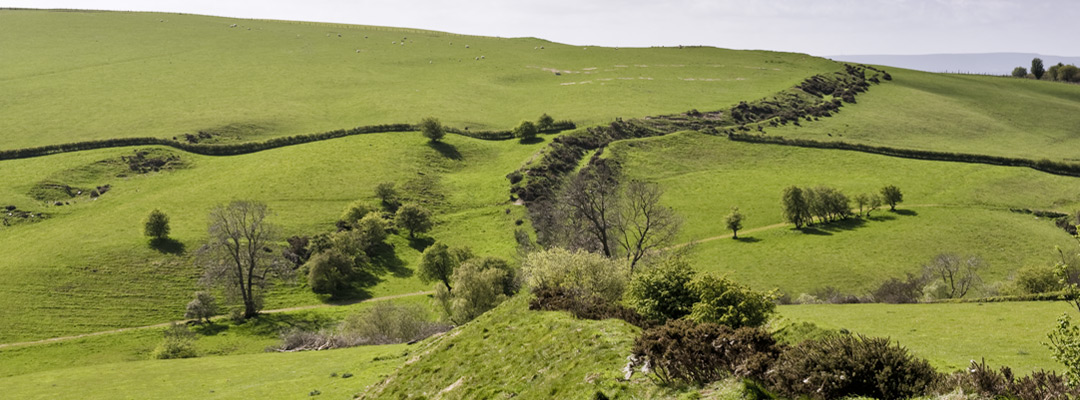
MAKE DO AND MEND
An Anglo-Saxon poet marvelling at the ruins of a Roman city (perhaps Bath) called them ‘enta geweorc’ – the ‘work of giants’. It seemed incredible that they could be the work of mere men.
Most 5th-century ‘architecture’ was largely a matter of patching up or reusing existing buildings. The little rubble-built Anglian Tower, which plugs a gap in York’s Roman walls, is one of the few new stone buildings which may date from this period.
Much more impressive must have been the 23-metre-long timber hall built within the old granaries at Birdoswald Roman Fort on Hadrian’s Wall. Raised soon after the collapse of imperial rule in 410, it was presumably built for the commanders of the independent war band which moved in after the garrison left.
Timber houses replaced the dilapidated stone buildings at Wroxeter Roman City, Shropshire. And though there is evidence of numerous 5th- to 7th-century stone buildings at the British princely site at Tintagel Castle, the Anglo-Saxons, who came from lands where the necessary materials scarcely existed, probably had no tradition of building in stone.
OFFA’S DYKE
Both Britons and Anglo-Saxons were accustomed to constructing great ditched and banked linear earthwork dykes.
Offa's Dyke is the most astonishing of all the engineering feats of this period, comparable in grandeur of conception to Hadrian’s Wall. 81 miles long, it stretches intermittently from near Chepstow in the south to Prestatyn in the north, clearly defining the boundary between the English and the Britons. The organisation of the massive labour force required is an impressive tribute to the power of King Offa of Mercia (r.757–96).
The dyke cannot have been defensible along its whole length, although it may have been patrolled by mounted border guards. But it was an effective means of controlling the east–west movement of people, and thus – potentially – of levying taxation too.
Stone Churches
The building tradition of late Roman Christianity produced the first stone churches in England. Earliest of all is St Augustine’s Abbey in Canterbury, Kent, founded by the missionary saint soon after his arrival from Rome in 597. Built out of reused Roman bricks, its three churches were all modelled on Roman ‘basilica’ churches.
So too was the Roman-style stone church built in about 669 by Augustine’s followers within Reculver Roman Fort in Kent.
But the biggest of all these Roman-style stone churches – and indeed the largest Anglo-Saxon church in England – is at Brixworth, Northamptonshire. Dating from about 800, it is only slightly smaller than the early 9th-century cathedral at Canterbury, which lies beneath the nave of the present medieval building.
TIMBER TRADITION
The majority of Anglo-Saxon churches were originally wooden buildings – although many, as at Wharram Percy Deserted Medieval Village, North Yorkshire, were later rebuilt in stone. The only timber survivor is at Greensted in Essex, whose nave walls are built of split oak posts that have been tree-ring-dated to between 998 and 1063.
There is plenty of archaeological evidence that grand secular buildings were also of wood. The conspicuous consumption of timber by important individuals was a display of status and control over manpower and scarce natural resources.
The English timber-building tradition left its mark on some later stone-built churches. One example is St Peter’s, Barton-upon-Humber, constructed in about 970. Although it displays many of the distinctive features of pre-Norman stone churches, the thin vertical stone strips on its tower are inspired by timber decorations.
More about Early Medieval England
-
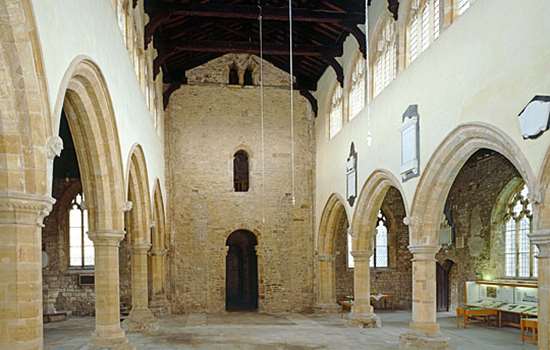
Early Medieval: Architecture
Most early medieval buildings were constructed mainly using wood, but this tradition left its mark on later stone-built churches.
-
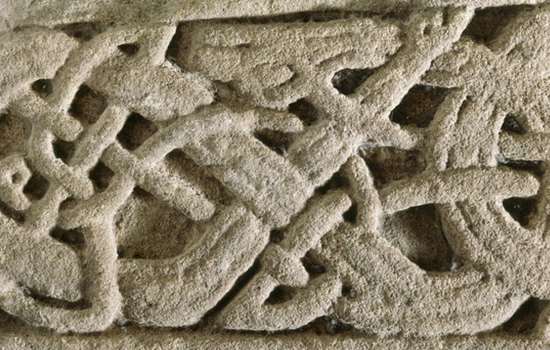
Early Medieval: Art
The early medieval period produced many examples of highly distinctive art of world-class significance.
-
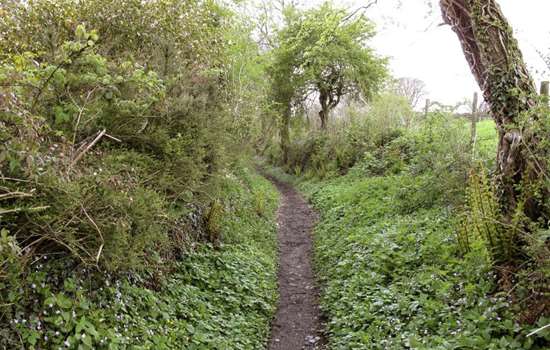
Early Medieval: Networks
Between the end of Roman rule and the arrival of the Normans, England's relationship with the wider world changed many times.
-
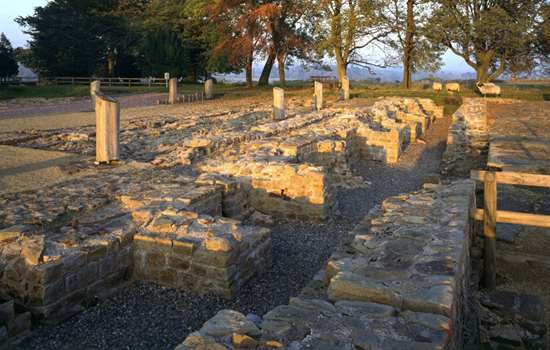
Early Medieval: Power and Politics
This period saw the evolution of a nation of warlords into a country organised into distinct kingdoms.
-
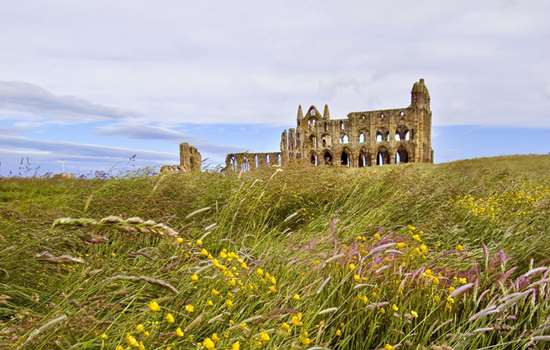
Early Medieval: Religion
Christianity in Britain tends to be associated with the arrival of St Augustine in 597, but it had in fact already taken root in Roman Britain.
Early Medieval Stories
-
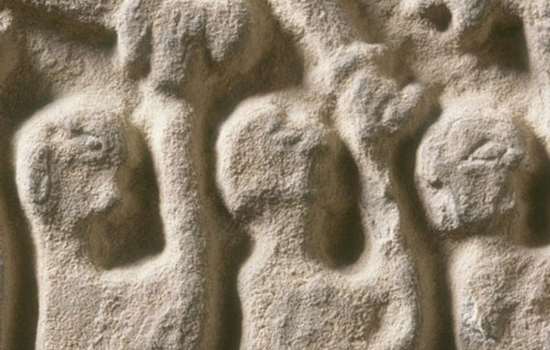
The Viking Raid on Lindisfarne
A devastating Viking attack on the church of St Cuthbert in 793 sent a shockwave through Europe. But how did a Christian community at Lindisfarne survive?
-
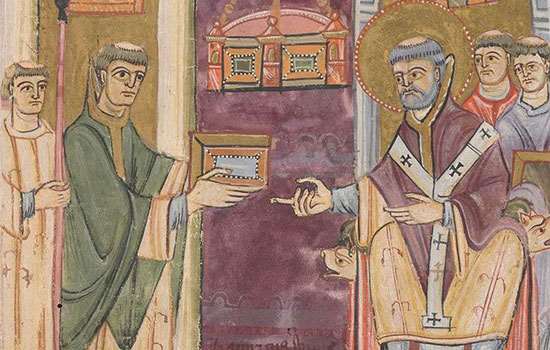
Who Was St Augustine?
In the late 6th century, a man was sent from Rome to England to bring Christianity to the Anglo-Saxons. But who was St Augustine, and how did his mission succeed?
-
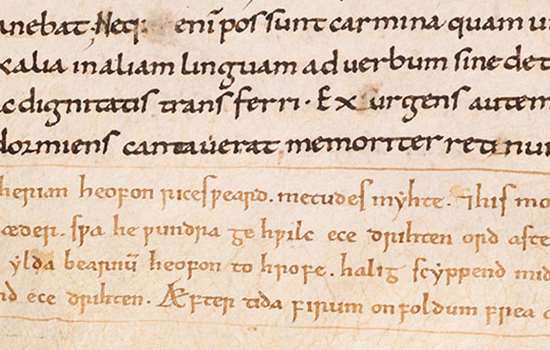
Caedmon, Whitby and Early English Poetry
How Cædmon’s poetic awakening, at the monastery that lies beneath Whitby Abbey, produced one of the first fragments of English verse.
-
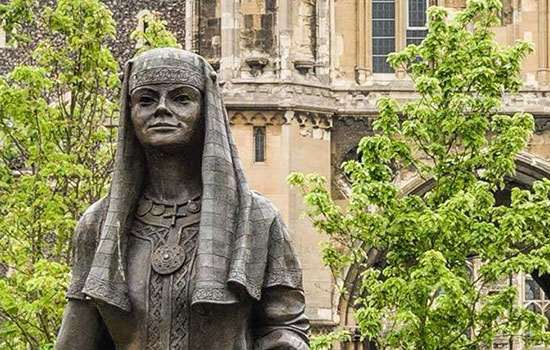
Queen Bertha: A Historical Enigma
In 597, St Augustine arrived in England to convert the Anglo-Saxons to Christianity. Virtually every modern description of this mission mentions Queen Bertha of Kent. But who was Bertha?
-
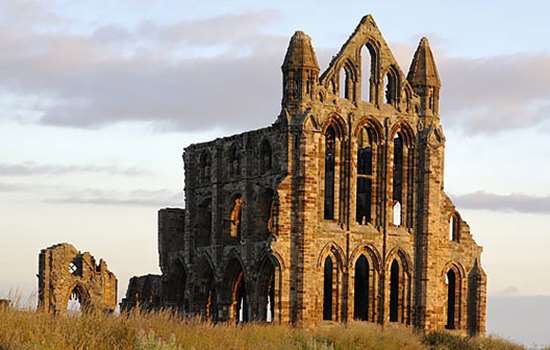
The Synod of Whitby and the Keys of Heaven
How a decision about the way in which the date of Easter should be calculated was a landmark in the history of Christianity in England.
-
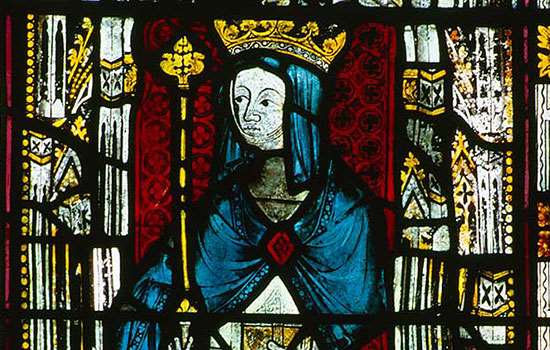
St Hild of Whitby
Hild is a significant figure in the history of English Christianity. As the abbess of Whitby, she led one of the most important religious centres in the Anglo-Saxon world.
-
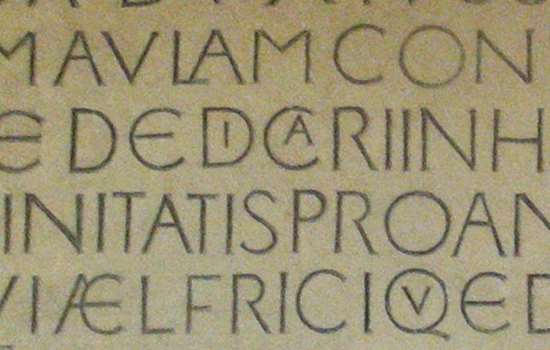
Two Happy Accidents Reveal Odda’s Chapel, Deerhurst
How the chance discovery of a chapel in Gloucestershire has proved crucial to our understanding of Anglo-Saxon architecture.
